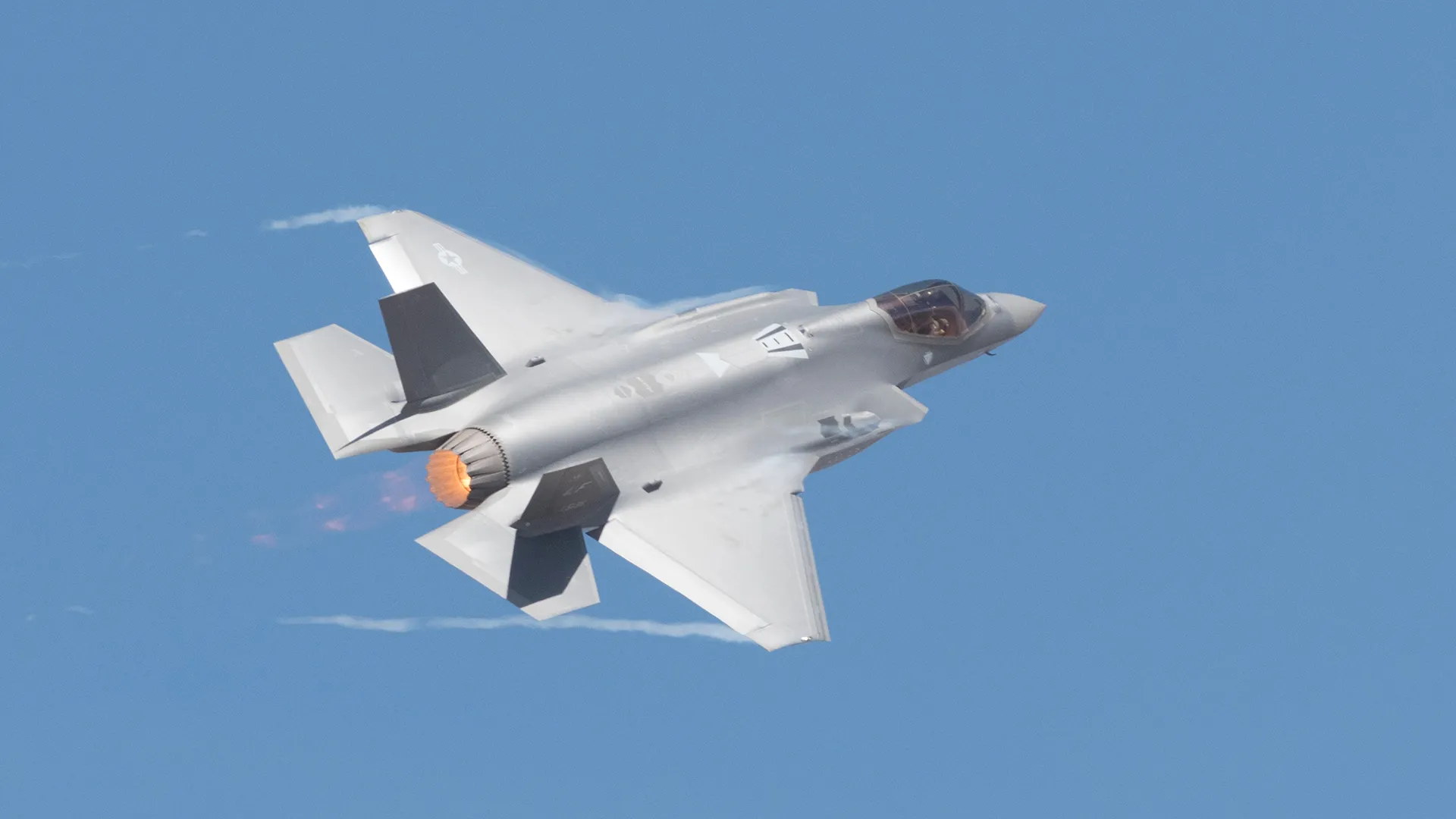Venezuela slams presence of US F-35 fighter planes spotted off coast | Donald Trump News
Venezuelan government calls on US Defense Secretary Pete Hegseth to cease ‘thrill-seeking and warmongering posture’.
Published On 3 Oct 2025
Venezuela’s government has blasted an “illegal incursion” near its borders by United States warplanes and accused the US of “military harassment” and threatening the “security of the nation”.
Venezuelan Defence Minister General Vladimir Padrino said on Thursday that at least five F-35 fighter jets had been detected, in what he describes as a threat that “US imperialism has dared to bring close to the Venezuelan coast”.
Recommended Stories
list of 4 itemsend of list
“We’re watching them, I want you to know. And I want you to know that this doesn’t intimidate us. It doesn’t intimidate the people of Venezuela,” Padrino said, speaking from an airbase, according to the Agencia Venezuela news outlet.
“The presence of these planes flying close to our Caribbean Sea is a vulgarity, a provocation, a threat to the security of the nation,” Padrino said.
“I denounce before the world the military harassment, the military threat by the US government against the people of Venezuela, who want peace, work and happiness,” he said.
The presence of the US combat planes was detected by the country’s air defences, air traffic control systems at Maiquetia international airport, which serves the capital Caracas, as well as a commercial airliner, Venezuelan authorities said.
In a joint statement, Venezuela’s foreign and defence ministries said the US combat planes were detected 75km (46.6 miles) “from our shores”. If the planes came no closer than the distance mentioned by Venezuelan authorities, then they would not have violated the country’s airspace, which extends about 12 nautical miles, or 22km, off the coast.
Still, the ministries accused the US of flouting international law and jeopardising civil aviation in the Caribbean Sea.
Venezuela “urges US Secretary of War Peter Hegseth to immediately cease his reckless, thrill-seeking and warmongering posture”, which is disturbing the peace of the Caribbean, the statement added.
Venezuela denuncia incursión ilegal de aviones de combate de EEUU en sus costas: «Provocación que amenaza la soberanía nacional» (+Comunicado)https://t.co/GnR4wLRDzz
— Agencia Venezuela News (@AgenciaVNews) October 2, 2025
The Pentagon has yet to respond to requests for comment from media organisations.
US media reported earlier on Thursday that President Donald Trump has notified Congress that the US is now engaged in “non-international armed conflict” against drug cartels, members of which would now be considered “unlawful combatants”.
Trump’s move to a more formal war footing follows on from the US administration’s rebranding of Latin American drug cartels as “narco-terrorists” who are seeking to destabilise the US by trafficking illegal drugs across US borders.
The move follows weeks of tension with Venezuela after Trump dispatched US F-35 stealth fighter jets to Puerto Rico, a US territory in the Caribbean, as part of the biggest military deployment in Latin America in decades and which has already seen air attacks on boats off the Venezuelan coast that the US president alleged were involved in drug trafficking.
So far, 14 people have been killed in the US attacks off Venezuela that officials in Caracas and several independent experts have described as extrajudicial killings.
Eight US warships and a nuclear submarine have also been deployed to the region as part of Trump’s so-called operation to combat drug trafficking, but which Venezuela’s President Nicolas Maduro says is a covert bid to bring about regime change in his country.


